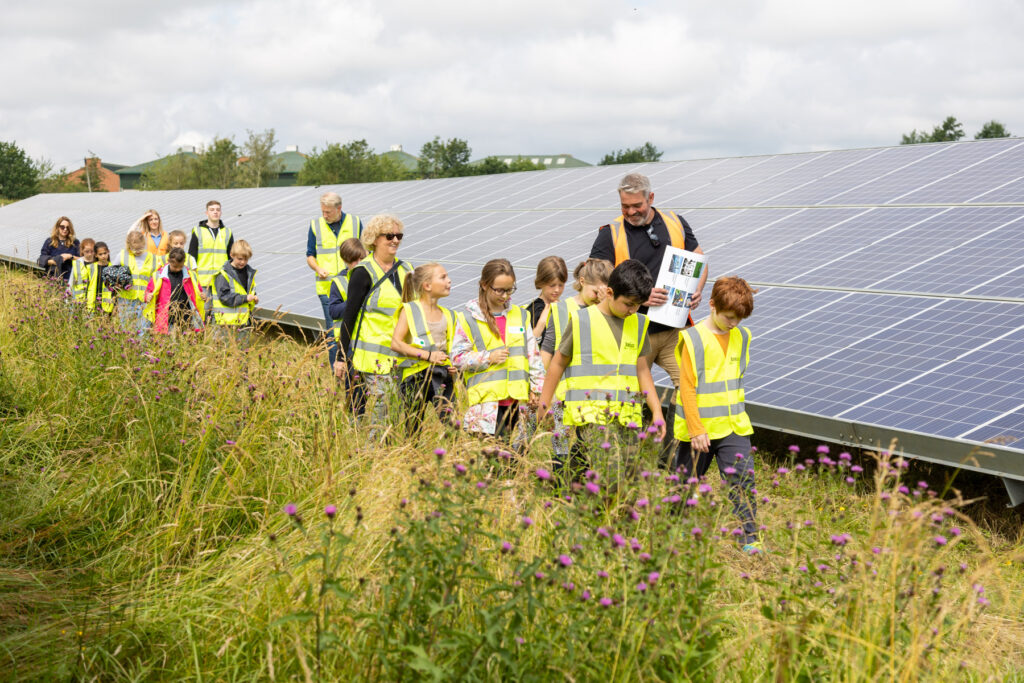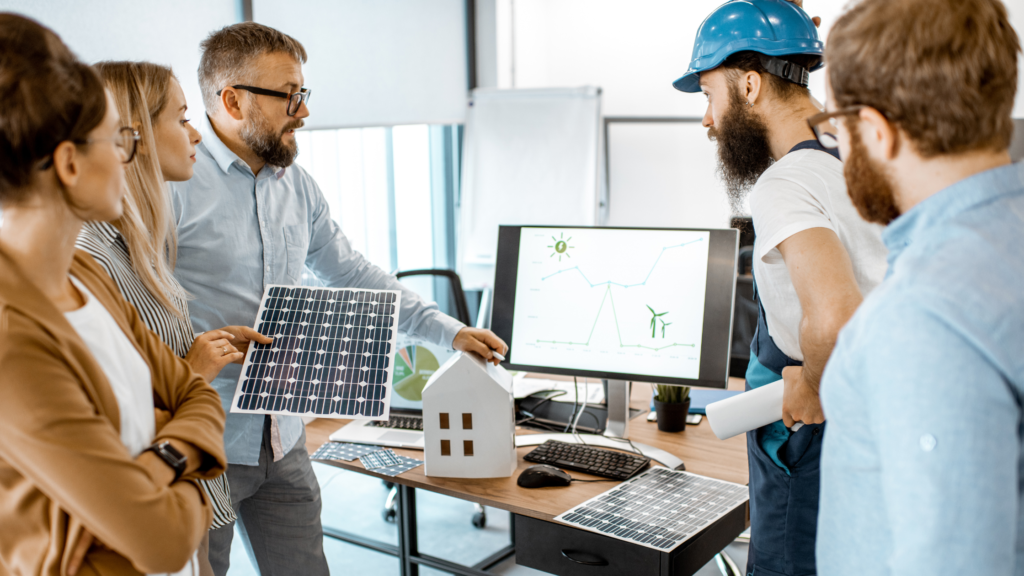The energy landscape is changing, and communities are taking the lead. Community-led renewable energy projects are revolutionizing how we think about power generation and distribution. These initiatives are more than just a way to reduce carbon emissions – they’re about empowering local communities, fostering sustainable development, and creating a more equitable energy future.
What Are Community-Led Renewable Energy Projects?

At their core, community-led renewable energy (CLRE) projects are locally-owned and managed initiatives that generate clean energy for a specific community. Unlike traditional energy models dominated by large corporations, CLRE projects put the power – quite literally – in the hands of local residents.
These projects come in all shapes and sizes. You might see a group of neighbors investing in rooftop solar panels, a small town building its own wind farm, or a rural community setting up a micro-hydro system. The common thread? Local ownership, local decision-making, and local benefits.
Why Community-Led Projects Matter
Empowering Local Communities
CLRE projects give communities control over their energy resources. This isn’t just about keeping the lights on – it’s about economic independence, energy security, and community resilience. When communities generate their own power, they’re less vulnerable to external shocks and price fluctuations.
Moreover, these projects foster a sense of ownership and pride. Community members aren’t just passive consumers of energy – they’re active participants in their energy future. This engagement can spark wider interest in sustainability and local development.
Promoting Sustainability
The environmental benefits of renewable energy are well-known, but community-led projects take it a step further. By focusing on small-scale, decentralized solutions, these initiatives often have a lower environmental impact than large-scale energy projects. They can be tailored to local conditions and needs, maximizing efficiency and minimizing disruption to local ecosystems.
More Than Just Clean Energy
Community-led renewable energy projects aren’t just good for the planet – they’re good for local economies too. These initiatives create jobs, from project planning and installation to ongoing maintenance and management. They keep energy spending local, circulating money within the community rather than sending it to distant utility companies.
In some cases, community energy projects can even generate revenue. Excess energy can be sold back to the grid, creating a new income stream for the community. This financial benefit can be reinvested in other local development projects, creating a virtuous cycle of sustainable growth.
Building Stronger Communities

The social impact of community-led renewable energy projects shouldn’t be underestimated. These initiatives bring people together, fostering collaboration and strengthening community bonds. They can be a source of local pride and identity, especially in rural or underserved areas.
Moreover, by providing affordable and reliable energy, these projects can improve quality of life. They support essential services like healthcare and education, and can help reduce energy poverty – a critical issue in many parts of the world.
Models for Community-Led Renewable Energy
Community-Led Renewable Energy projects empower communities to generate, manage, and benefit from renewable energy. These initiatives come in various forms, each tailored to meet specific community needs and leverage available resources. Here are some key models:
- Community-Owned Power Plants: These larger-scale projects involve the collective ownership and operation of renewable energy facilities such as solar farms or wind turbines. The community members invest in and benefit from the power plant, which generates clean energy and provides financial returns to the investors. This model fosters local economic growth, energy independence, and environmental sustainability.
- Community Solar Gardens: Also known as solar farms or solar parks, community solar gardens allow individuals to buy or lease a portion of a larger solar installation. This model is particularly beneficial for those who cannot install solar panels on their own properties, such as renters or homeowners with unsuitable roofs. By participating in a community solar garden, members can access renewable energy and reduce their electricity bills.
- Rooftop Solar Cooperatives: In this model, groups of community members collectively invest in and install solar panels on local buildings. The cooperative model spreads the costs and benefits among the participants, making solar energy more affordable and accessible. The energy produced is used to power local buildings, with any excess electricity sold back to the grid, providing financial returns to cooperative members.
- Microgrids: Microgrids are localized electricity grids powered by renewable sources like solar, wind, or hydropower. These grids can operate independently or in conjunction with the main grid. Microgrids are especially useful in remote areas or communities seeking energy independence. They enhance energy security, improve resilience against grid outages, and promote the use of clean energy.
- Community Wind Projects: Similar to community-owned power plants, community wind projects involve the collective ownership and operation of wind turbines. These projects harness wind energy to generate electricity, which is then distributed among community members or sold to the grid. Community wind projects provide a sustainable energy source while generating economic benefits for the local area.
- Biomass Energy Cooperatives: Biomass energy cooperatives use organic materials such as agricultural waste, wood chips, and other biomass sources to produce energy. Community members collectively invest in and manage biomass facilities, which convert these materials into heat or electricity. This model supports sustainable waste management practices and provides a renewable energy source for the community.
- Hydropower Initiatives: Small-scale hydropower projects involve the community in harnessing energy from local water sources like rivers or streams. These projects can provide a reliable and consistent energy supply while minimizing environmental impacts. Community members invest in and benefit from the hydropower facilities, contributing to local energy independence and sustainability.
Strategies for Success
Building Strong Partnerships
Successful community-led renewable energy projects often rely on strong partnerships. Collaborating with local governments can help navigate regulatory issues and secure necessary permits. Partnering with NGOs or universities can provide technical expertise and access to resources. Even private sector partnerships can be valuable, offering funding or technical support.
Securing Funding and Resources
Funding is often a major hurdle for CLRE projects. Communities need to get creative, exploring options like:
- Government grants and subsidies
- Crowdfunding campaigns
- Community investment schemes
- Partnerships with ethical banks or impact investors
A solid business plan is crucial. It should clearly demonstrate the project’s feasibility, potential impact, and long-term sustainability.
Ensuring Community Engagement
Community engagement is the heartbeat of these projects. It’s essential to involve local residents from the start, ensuring the project meets their needs and has their support. This might involve:
- Holding town hall meetings to discuss the project
- Conducting surveys to gauge community interest and concerns
- Forming working groups to involve community members in planning and decision-making
- Providing regular updates and maintaining transparency throughout the process
Overcoming Challenges
Technical and Logistical Barriers
Many communities face technical challenges when implementing renewable energy projects. This might include a lack of local expertise or difficulties accessing suitable technologies. Solutions can include:
- Partnering with technical experts or educational institutions
- Investing in training and capacity-building programs for community members
- Leveraging existing infrastructure where possible
- Starting with smaller, pilot projects to build experience and confidence
Navigating Regulatory Landscapes
The regulatory environment for community energy projects can be complex and varies widely between regions. Communities may need to:
- Engage early with local and regional authorities
- Seek legal advice to understand relevant regulations and requirements
- Participate in advocacy efforts to promote supportive policies
- Collaborate with other CLRE projects to share knowledge and resources
Looking to the Future
Community-led renewable energy projects represent a powerful model for sustainable development and local empowerment. As technology costs continue to fall and awareness grows, we’re likely to see these initiatives proliferate around the world.
For communities considering their own renewable energy project, the journey may seem daunting. But the potential rewards – economic, environmental, and social – make it a worthwhile endeavor. With careful planning, strong partnerships, and community engagement, local renewable energy projects can transform not just how we power our homes and businesses, but how we build resilient, sustainable communities for the future.
As we face the global challenges of climate change and energy security, community-led renewable energy projects offer a beacon of hope. They show that solutions can come from the ground up, driven by the ingenuity, determination, and collective action of local communities. In this way, we’re not just generating clean energy – we’re generating a more sustainable and equitable future for all.



